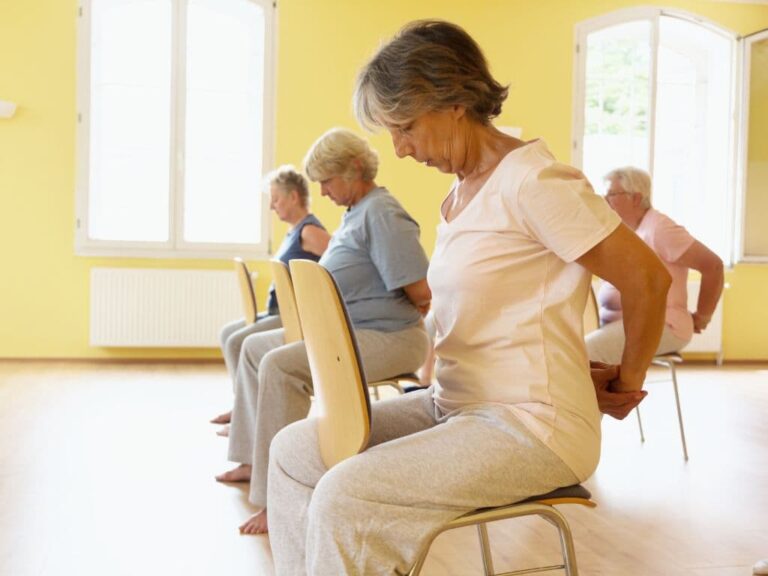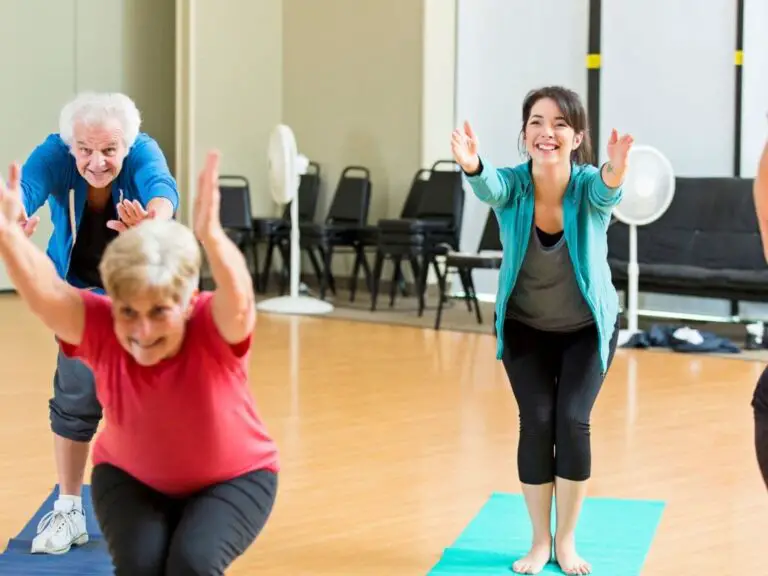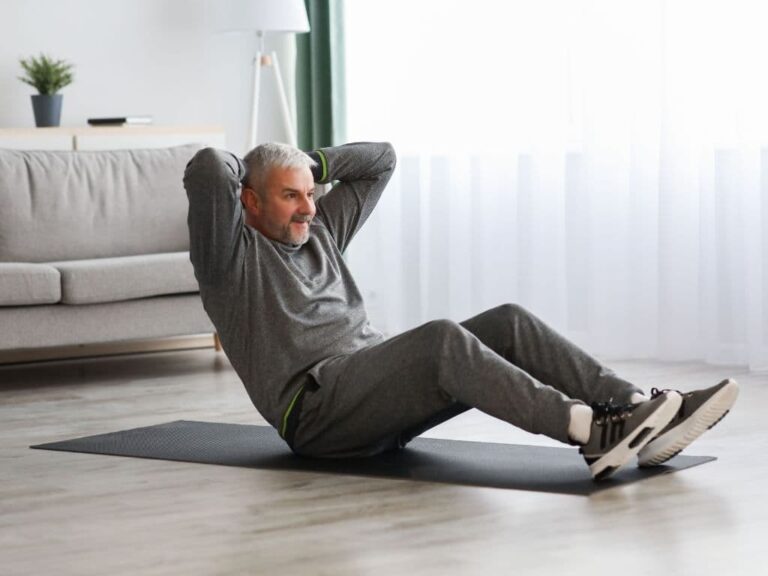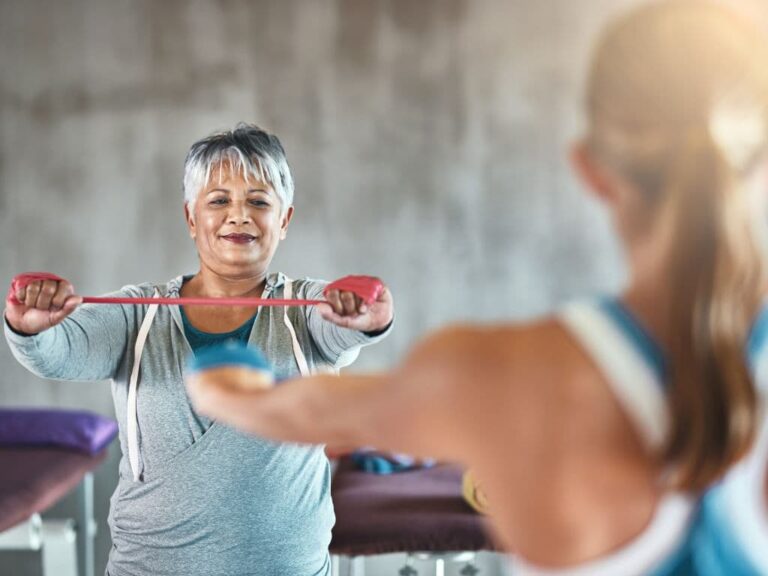What Are the Benefits of Chair Squats for Seniors?
Chair squats are a simple yet highly effective lower body exercise for seniors looking to maintain or improve their strength, balance and mobility. As we age, our muscles tend to weaken and our joint mobility decreases, which can lead to instability and increase the risk of falls. Chair squats are a safe way for seniors to counteract these effects by strengthening the leg muscles and improving balance.

What are Chair Squats and Why are They Beneficial for Seniors?
Chair squats are a variation of the traditional bodyweight squat that are performed sitting back into a chair. To do chair squats, you sit down on a chair as if you are going to sit down regularly. Once seated, you lean forward slightly and stand back up without using your hands or arms. The motion of standing up strengthens the quadriceps, hamstrings, and glutes, while also engaging the core muscles for stability.
Here are some of the biggest benefits of doing chair squats regularly for seniors:
- Builds lower body strength – Chair squats engage all the major musclesin the legs including the quadriceps, hamstrings and glutes. Keeping leg muscles strong can help seniors maintain mobility and reduce risk of falls.
- Improves balance – Having to stand up and sit back down without using your hands challenges your balance and coordination. This is key for stability as we age.
- Enhances mobility – Stronger leg muscles and improved balance translates to better mobility and ability to move around safely. Chair squats are a great way to maintain independence.
- Easy on the joints – Because chair squats are supported by sitting into a chair, there is less pressure on the knee and hip joints compared to regular squats. This makes them comfortable for seniors.
- Increases bone density – The impact and resistance provided by chair squats can help increase bone mineral density, reducing the risk of osteoporosis.
- Boosts confidence – Being able to get in and out of chairs with ease gives seniors more confidence in their strength and mobility.
How to Perform Chair Squats Correctly?
To properly perform chair squats:
- Stand in front of a sturdy, armless chair. Your feet should be shoulder-width apart.
- Sit back and down slowly until your buttocks touch the chair, keeping your back straight and chest lifted. Focus on sending your hips back as if you are going to sit down normally.
- Engage your core and keep your weight in your heels as you lower down, rather than on your toes.
- Your knees should bend to 90 degrees as you descend into the chair squat. Do not squat deeper than a 90 degree angle.
- Hold for 1 second at the bottom of the motion to engage the leg muscles.
- Press through your heels to stand back up to starting position in a controlled motion. Do not use momentum or your hands/arms to stand up.
- Repeat for the desired number of reps, keeping proper form. Take breaks as needed between sets.
The keys are to move slowly, maintain an upright torso, only go down until your thighs are parallel to the floor, and use your leg muscles rather than momentum to stand up.
How Can Chair Squats be Modified for Different Fitness Levels?
One of the great things about chair squats is that they can be easily modified to accommodate different fitness levels and abilities.
Here are some ways to modify chair squats:
- Use support – Hold on to a sturdy object like a railing or counter for balance assistance if needed. The support takes some weight off the legs.
- Do not go down as far – Limit your range of motion to a shallower squat to reduce strain on the knees and hips. Only go down as far as is comfortable.
- Hold the squat – To make it more challenging, pause for 5-10 seconds at the bottom of the squat before standing back up. This engages the muscles more.
- Add repetitions – Start with 5-10 reps and gradually increase as your leg strength improves. Shoot for 3 sets total.
- Add weights – Once you can do bodyweight chair squats well, hold dumbbells at your sides to add resistance and intensity. Start light.
Scaling back range of motion, using an assistive object, or reducing reps allows seniors at any fitness level to do chair squats safely while still building strength.
What are Some Common Mistakes to Avoid When Doing Chair Squats?
To protect your knees and get the most out of chair squats, be aware of these form mistakes:
- Going too low – Squatting deeper than 90 degrees increases strain on the knees. Only go down until your thighs are parallel to the floor.
- Letting your knees cave inward – Concentrate on pushing your knees outwards to keep them aligned over your feet and prevent injury.
- Rounding your back – Maintaining an upright, neutral spine keeps pressure off the lower back. Stick your chest out.
- Using momentum to stand up – Relying on momentum rather than leg strength compromises results. Control your motion both down and up.
- Holding your breath – Avoid holding your breath as you squat. Exhale as you exert yourself upwards.
Making adjustments to correct these form errors will help seniors get optimal results from chair squats safely. Proper technique is key.
What are Some Other Lower Body Exercises for Seniors?
Along with chair squats, other great lower body strengthening exercises for seniors include:
- Mini-squats – Partial squats with a limited range of motion tone the legs. Hold onto a railing for support.
- Wall sits – Leaning back against a wall to squat engages leg muscles while upright.
- Calf raises – Lifting up onto your toes works the calves. Hold onto a chair for assistance.
- Hip abduction – Lying on your side and raising your top leg out to the side strengthens the hips.
- Mini lunges – Carefully stepping forward into a shallow lunge works the quadriceps and glutes.
- Leg extensions – Sitting and extending one leg out straight in front of you targets the quadriceps.
Seniors should start with easier exercises like calf raises before progressing to squats and lunges. Aim to work all the major muscle groups of the legs.
Conclusion
Chair squats are a highly beneficial exercise for seniors looking to maintain lower body strength and mobility. They strengthen the leg muscles, improve balance and enhance mobility when performed regularly. Seniors should be mindful of proper chair squat form, modifying exercises as needed based on individual fitness level. Incorporating chair squats alongside other leg toning activities can help seniors maintain independence and reduce fall risk. With patience and consistency, seniors at any ability level can see lower body improvements from chair squats.
Frequently Asked Questions
-
What do chair squats do?
The chair squat is a great exercise for beginners. It builds important leg muscles such as your quads and hamstrings.
-
What is the number one cause of death?
Heart disease is the number one. The term heart disease can refer to many different conditions. The most prevalent heart disease in America is coronary artery disease, which could lead to heart attacks. According to the CDC.
-
How much sleep does a 90 year old need?
It is interesting to note that older adults require about seven hours more sleep each night than younger adults.
-
What are the odds of living to 90?
According to the SOA, a 65 year-old male in good health today has 35% chances of making it to age 90. For a female, 46%. There is 50% chance that both of our 65-year olds will be around 16 years from now, while one person will live to 27. This assumes average health.
-
What is the unhappiest age?
Unhappiness peaked in America and Europe around the 49-year mark. Unhappiness generally follows a slope throughout life. Young children begin life with low levels of happiness, which gradually increases over time until they reach the age 49.
-
Are chair exercises effective?
Chair exercises can be done from the office, at home, or at a group. They are low-impact and easy to add movement to your daily routine. A 32-minute session can help you burn between 120 and 250 calories. If you add weights or resistance bands, the number of calories burned will go up even further.
-
Why is my stomach so big?
People gain belly fat for many reasons, such as poor nutrition, inactivity, stress, or a lack thereof. Improve nutrition and increase activity can help. The abdominal fat is the fat that surrounds your abdomen.
-
How long should 70 year old exercise?
Adults 65 years and over need to exercise at least 150 minutes per week. This could be 30 minutes each day or 5 days a weeks of moderate activity like walking. They also need to do 75 minutes per week of intense activity like running, jogging or hiking. A minimum of 2 days per week should be spent engaging in activities that help strengthen the muscles.
-
Which sitting position is best for weight loss?
Sitting straight up will reduce the strain on your back, neck, and shoulders. You can strengthen your core, increase calorie burn, and keep your back straight.
-
Can napping lead to dementia?
CLEVELAND A new study found that people over 60 who regularly take a nap more than one hour per day are at a higher risk for developing Alzheimer’s disease.







